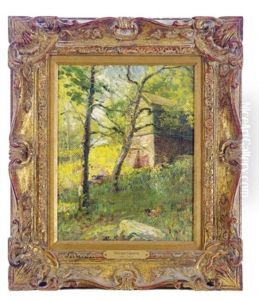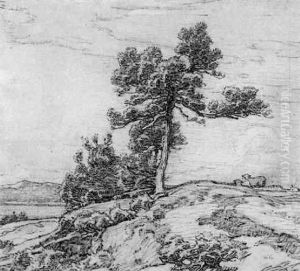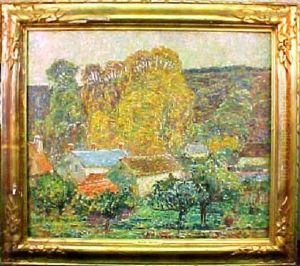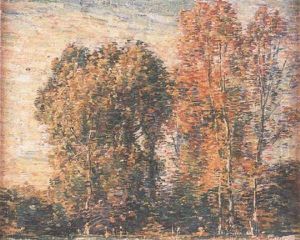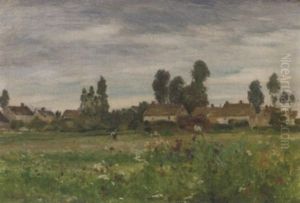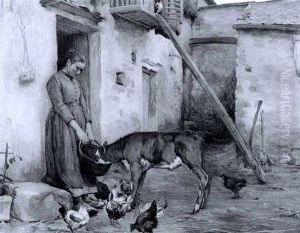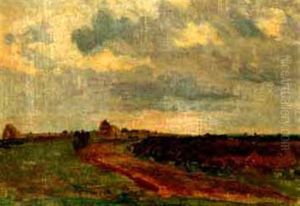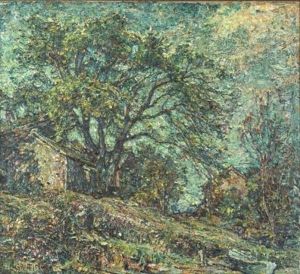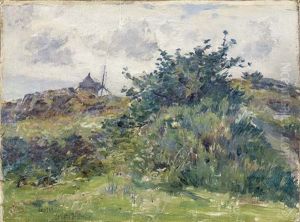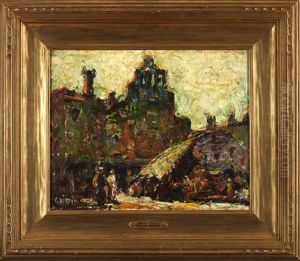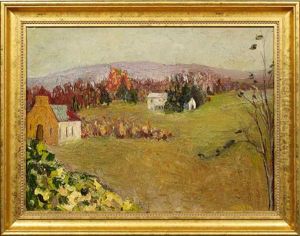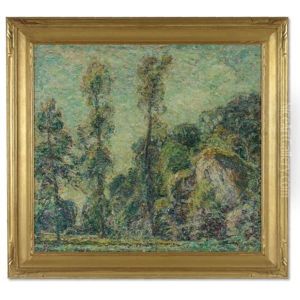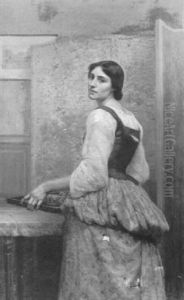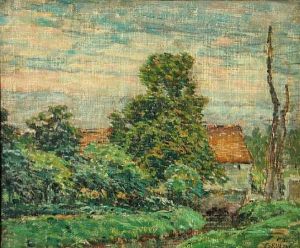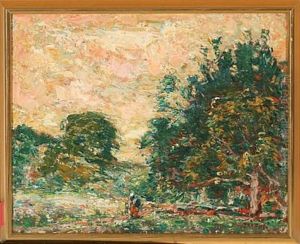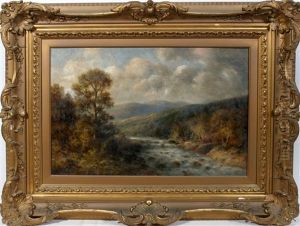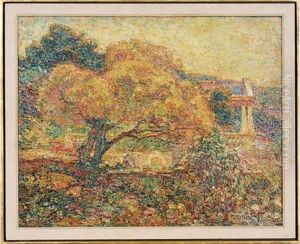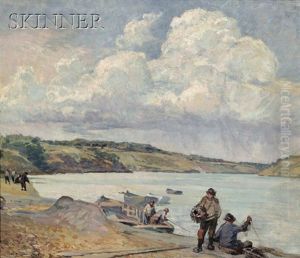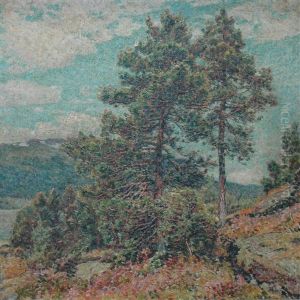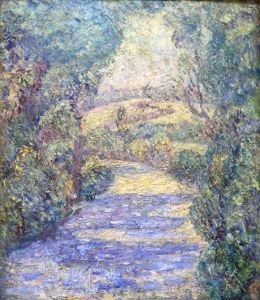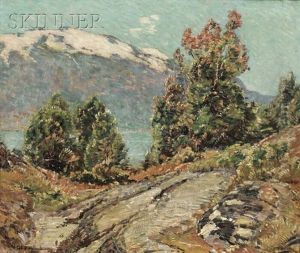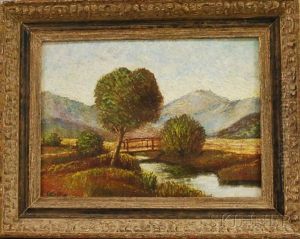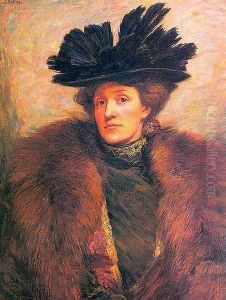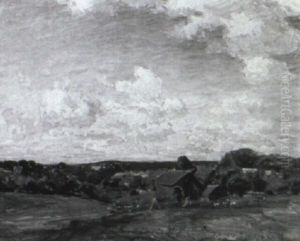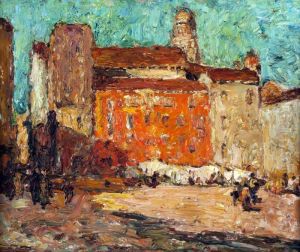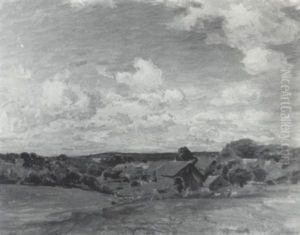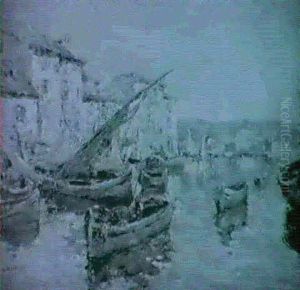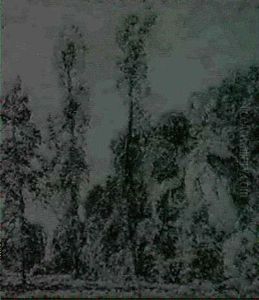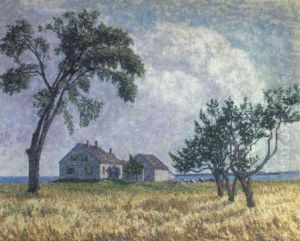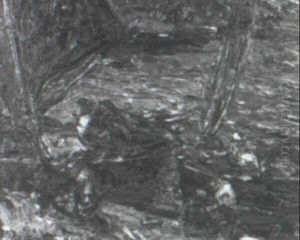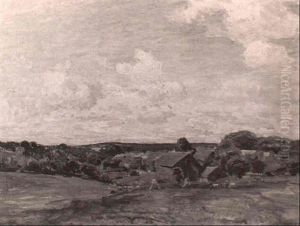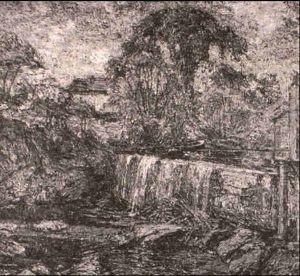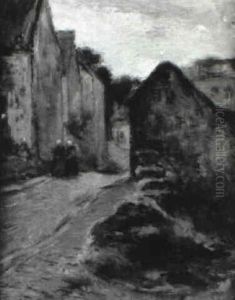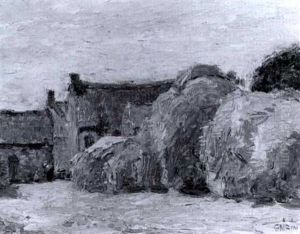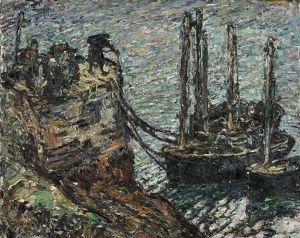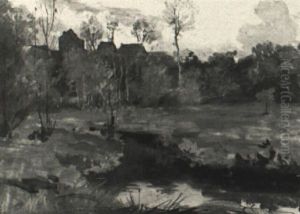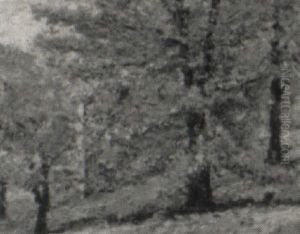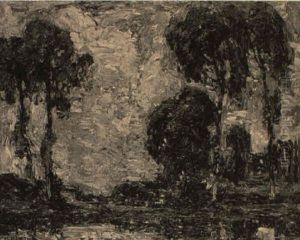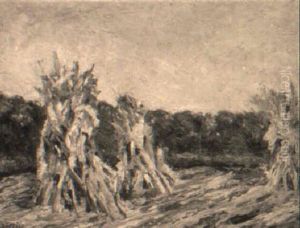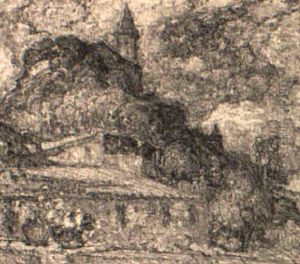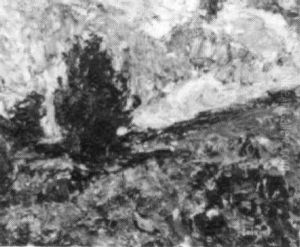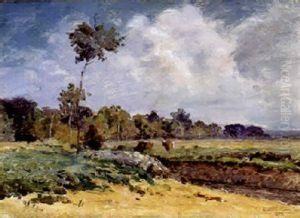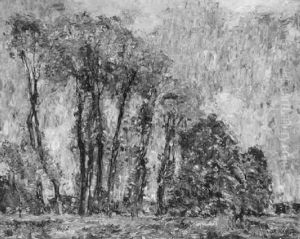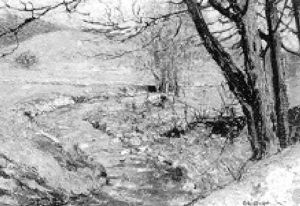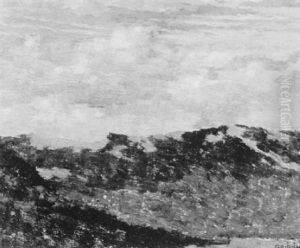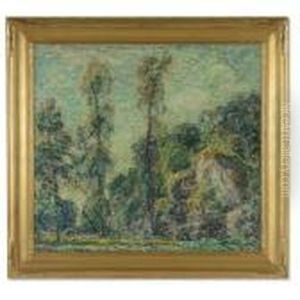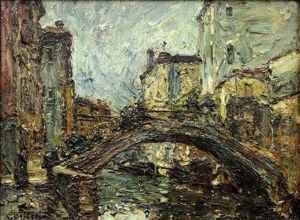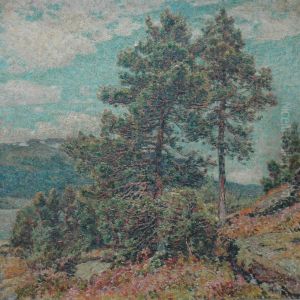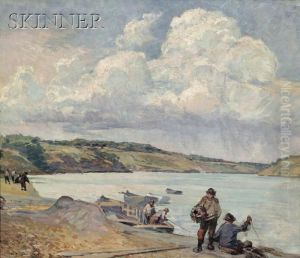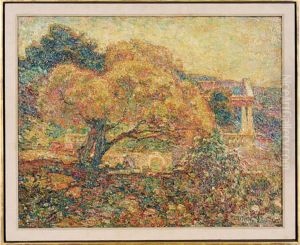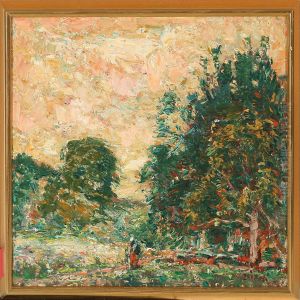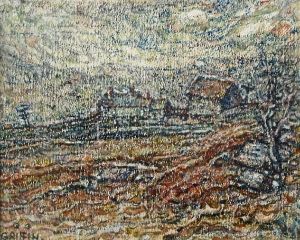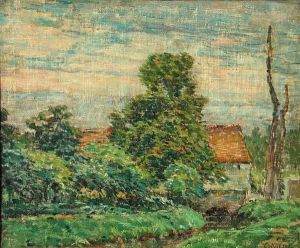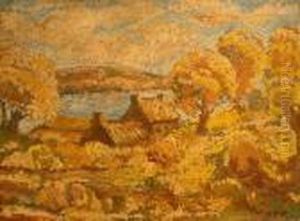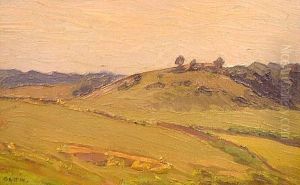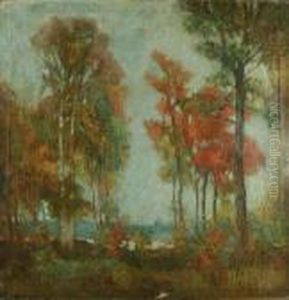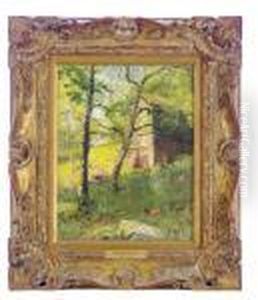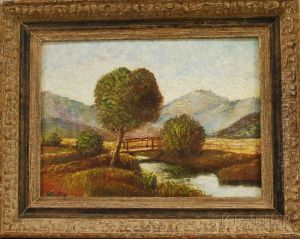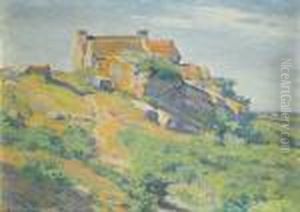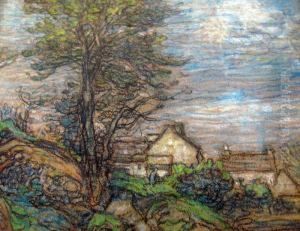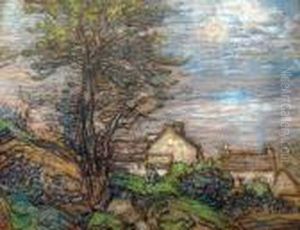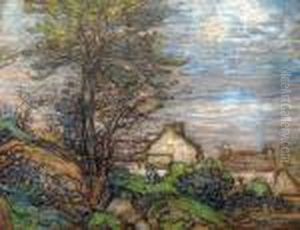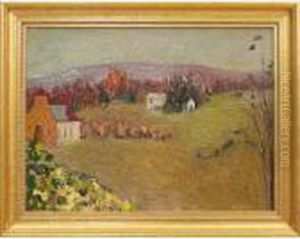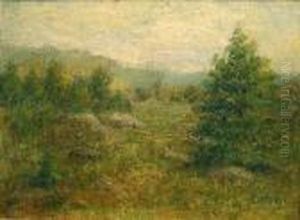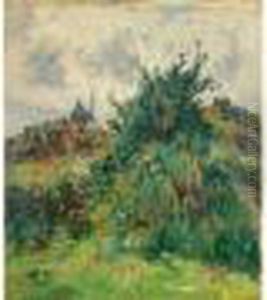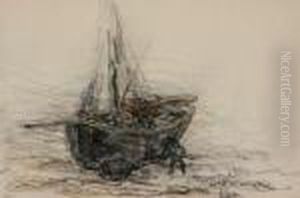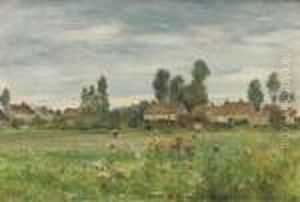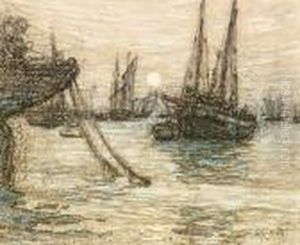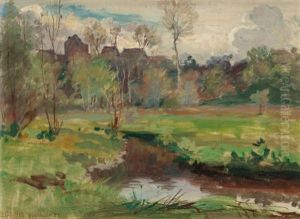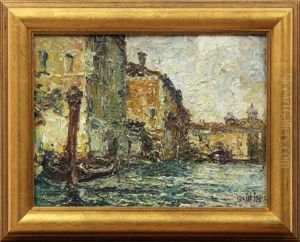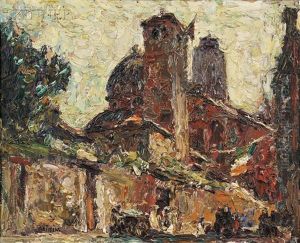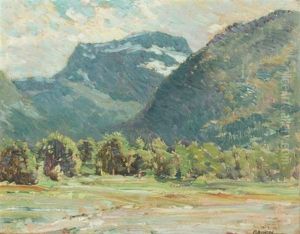Walter Griffin Paintings
Walter Griffin was an American Impressionist painter, born on September 14, 1861, in Portland, Maine. He was known for his vibrant landscapes and cityscapes. Griffin began his artistic education at the Portland School of Art (now the Maine College of Art). His early work was influenced by the Hudson River School, which was prominent during his formative years.
After his initial education, he traveled to Paris in 1885 to further his studies. It was here that Griffin encountered Impressionism, a movement that would greatly influence his style. He studied at the Académie Julian under Gustave Boulanger and Jules Lefebvre, who were both traditional academic painters. However, the exposure to new ideas and techniques in Paris led Griffin to experiment with the looser brushwork and lighter palette of the Impressionists.
Griffin returned to the United States and settled in Hartford, Connecticut. He became associated with the Old Lyme Art Colony, and his work began to reflect the bright colors and light effects characteristic of American Impressionism. Griffin's landscapes from this period often depict the New England countryside and are noted for their lively application of paint and attention to the effects of sunlight.
Throughout his career, Griffin traveled extensively. He made several trips back to Europe and also visited North Africa. These travels further influenced his palette and subject matter, as seen in works that incorporate the luminous colors of the Mediterranean region. Griffin was also a teacher and influenced a number of younger artists through his instruction at various institutions.
In 1912, Griffin won the Silver Medal at the International Art Competition at the Olympic Games, an achievement that underscored his international reputation. Despite this, he never gained the same level of fame as some of his contemporaries. Nevertheless, his work was widely exhibited during his lifetime, and he enjoyed the respect of his peers.
Walter Griffin's later years were marked by a return to Maine, where he continued to paint until his death on December 5, 1935. His work is represented in various American museums, including the Portland Museum of Art in Maine and the Florence Griswold Museum in Connecticut. Griffin's legacy lies in his contribution to American Impressionism and his dedication to capturing the transient effects of light and color in the landscape.
